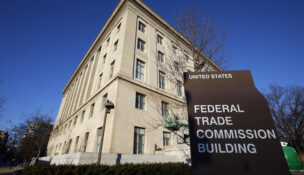Contamination Case Analysis
By: dmc-admin//February 4, 2004//
The decision is remarkable for its failure to even cite to the governing Wisconsin Supreme Court decision on pollution exclusions, Donaldson v. ULI, 211 Wis.2d 224, 564 N.W.2d 728 (1997), in which the court held that the identical exclusion at issue in the case at bar was ambiguous.
Donaldson involved a “sick building” case — because of inadequate ventilation, the buildup of carbon dioxide exhaled by humans became excessive, and caused personal injury to inhabitants of the building.
The building’s owners had a CGL policy with a pollution exclusion and an identical definition of “pollutant” as in the case at bar. The court of appeals held that the buildup of carbon dioxode was a “gaseous irritant,” and thus, a pollutant. The Supreme Court reversed, however, holding that “contaminant” was ambiguous.
Unlike the court of appeals in the case at bar, the Supreme Court held the definition of “pollutant” in U.S. Fire Ins. Co. v. Ace Baking Co., 164 Wis.2d 499, 476 N.W.2d 280 (Ct.App.1991), to be “not germane,” because, “unlike the Ace Baking policy, the policy at issue here provides a definition of ‘pollutant.’” Donaldson, 211 Wis.2d at 231, fn.4.
Citing a Seventh Circuit case, the court added, “the terms ‘irritant’ and ‘contaminant,’ when viewed in isolation, are virtually boundless, for there is virtually no substance or chemical in existence that would not irritate or damage some person or property. Id. at 232.
Thus, the court held, “the insurance policies’ definition of ‘pollutant’ is ambiguous.” Id. at 235.
Admittedly, the facts in the case at bar more resemble the “contamination” in Richland Valley Products, Inc., v. St. Paul Fire & Casualty Co., 201 Wis.2d 161, 548 N.W.2d 127 (Ct.App.1996), on which the court of appeals relied, than Donaldson.
However, Richland Valley Products did not involve interpretation of a pollution exclusion, but a “Contamination exclusion,” which provided, “Corrosion — inherent nature — animals. We won’t cover loss or damage caused or made worse by: mold, wet or dry rot, rust, corrosion, or contamination, including fungal or bacterial contamination.”
| |
||
|
Links Related Article |
||
| |
||
The insured — an ice cream manufacturer — sought coverage when its ice cream became contaminated by ammonia. Ironically, the insured argued that “contamination” was limited to organic contaminations, also citing the doctrine of ejusdem generis.
Far from supporting the court of appeals’ decision, however, Richland Valley Products actually supports Landshire’s position, because Landshire’s insurance policy did not contain a “Contamination Exclusion” which would explicitly bar coverage for the contamination of its meat with bacteria.
Instead, Landshire only had a pollution exclusion, which does not bar coverage for contamination, per se, but rather for the “discharge, dispersal, seepage, migration, release or escape of [contaminants].”
If it had been the intent of the parties to bar coverage for the occurrence in this case, the policy would have contained a standard contamination exclusion such as that in Richland Valley Products. The fact that there was no such exclusion indicates that the parties intended there be coverage.
Thus, even though the definition of “contaminant” may include bacteria, it is irrelevant in the case at bar, because the contamination of Landshire’s food fails to qualify as a “discharge, dispersal, etc., within the meaning of a pollution exclusion.
– David Ziemer
Click here for Main Story.
David
Ziemer can be reached by email.
Legal News
- FTC bans non-competes
- Gov. Evers seeks applicants for Dane County Circuit Court
- Milwaukee man charged in dismemberment death pleads not guilty
- Democratic-led states lead ban on the book ban
- UW Madison Professor: America’s child care crisis is holding back moms without college degrees
- History made in Trump New York trial opening statements
- Prosecutor won’t bring charges against Wisconsin lawmaker over fundraising scheme
- Republican Wisconsin Senate candidate says he doesn’t oppose elderly people voting
- Vice President Harris to reveal final rules mandating minimum standards for nursing home staffing
- Election workers fear threats to their safety as November nears
- Former law enforcement praise state’s response brief in Steven Avery case
- Eric Toney announces re-election bid for Fond du Lac County District Attorney
WLJ People
- Power 30 Personal Injury Attorneys – Russell Nicolet
- Power 30 Personal Injury Attorneys – Benjamin Nicolet
- Power 30 Personal Injury Attorneys – Dustin T. Woehl
- Power 30 Personal Injury Attorneys – Katherine Metzger
- Power 30 Personal Injury Attorneys – Joseph Ryan
- Power 30 Personal Injury Attorneys – James M. Ryan
- Power 30 Personal Injury Attorneys – Dana Wachs
- Power 30 Personal Injury Attorneys – Mark L. Thomsen
- Power 30 Personal Injury Attorneys – Matthew Lein
- Power 30 Personal Injury Attorneys – Jeffrey A. Pitman
- Power 30 Personal Injury Attorneys – William Pemberton
- Power 30 Personal Injury Attorneys – Howard S. Sicula











